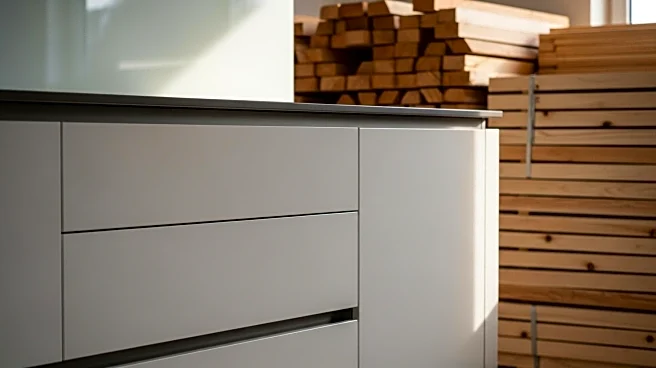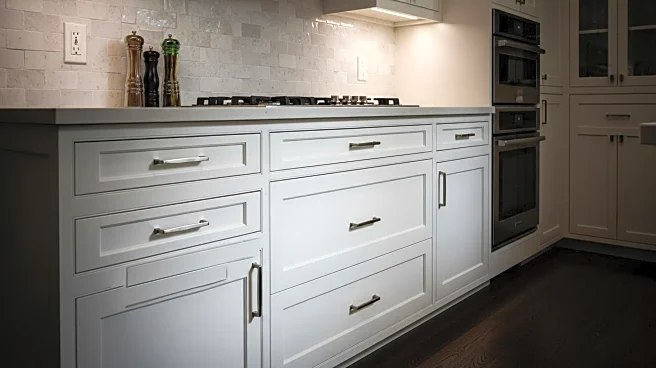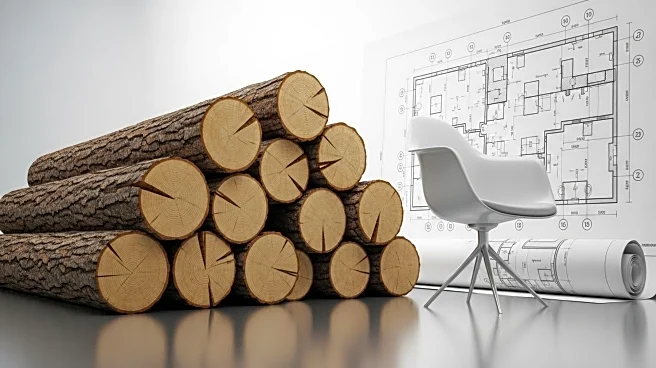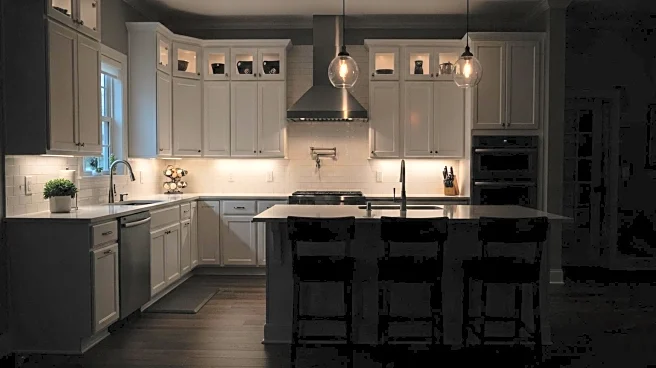What's Happening?
President Trump has enacted new tariffs on imported kitchen cabinets, vanities, lumber, timber, and certain upholstered furniture. These tariffs, ranging from 10% to 50%, are intended to protect U.S. manufacturers and address national security concerns. The tariffs are expected to increase construction and renovation costs, affecting the housing market. Retailers, including Walmart, may pass these costs onto consumers, leading to higher prices for imported goods. The tariffs are part of Trump's broader trade policy, which has previously targeted sectors like steel and automotive components.
Why It's Important?
The tariffs could significantly impact the U.S. housing market by raising construction costs, potentially slowing down home building and renovations. This may lead to increased prices for consumers and affect the affordability of housing. Retailers are likely to face challenges in absorbing these costs, which could result in higher prices for consumers. The move also reflects ongoing trade tensions between the U.S. and other countries, particularly China, and could influence international trade dynamics.
What's Next?
Retailers and industry stakeholders are closely monitoring the situation, with potential price increases expected as the tariffs take effect. The housing market may experience further challenges as construction costs rise. The tariffs could also lead to negotiations for new trade agreements to mitigate their impact. Stakeholders in the housing and retail sectors may advocate for policy changes to address the economic implications of these tariffs.
Beyond the Headlines
The tariffs highlight the complex interplay between trade policy and domestic economic conditions. They raise questions about the balance between protecting domestic industries and maintaining affordable consumer prices. The long-term effects on the housing market and consumer spending could influence broader economic trends and policy decisions.












